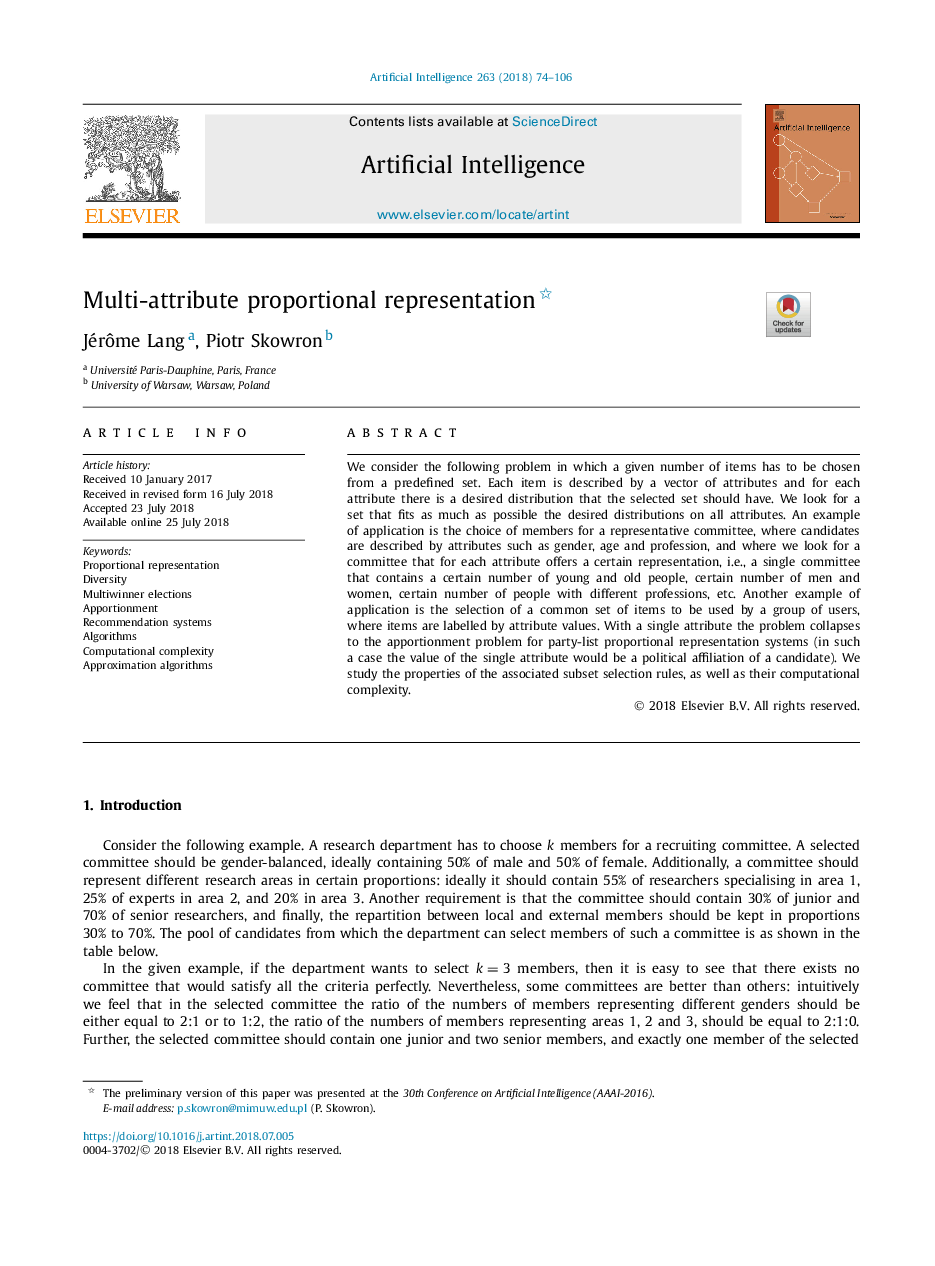| Article ID | Journal | Published Year | Pages | File Type |
|---|---|---|---|---|
| 6852983 | Artificial Intelligence | 2018 | 33 Pages |
Abstract
We consider the following problem in which a given number of items has to be chosen from a predefined set. Each item is described by a vector of attributes and for each attribute there is a desired distribution that the selected set should have. We look for a set that fits as much as possible the desired distributions on all attributes. An example of application is the choice of members for a representative committee, where candidates are described by attributes such as gender, age and profession, and where we look for a committee that for each attribute offers a certain representation, i.e., a single committee that contains a certain number of young and old people, certain number of men and women, certain number of people with different professions, etc. Another example of application is the selection of a common set of items to be used by a group of users, where items are labelled by attribute values. With a single attribute the problem collapses to the apportionment problem for party-list proportional representation systems (in such a case the value of the single attribute would be a political affiliation of a candidate). We study the properties of the associated subset selection rules, as well as their computational complexity.
Keywords
Related Topics
Physical Sciences and Engineering
Computer Science
Artificial Intelligence
Authors
Jérôme Lang, Piotr Skowron,
